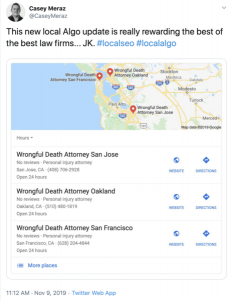
Social as a communication channel has grown and matured. So, too, have opinions from marketers and community managers on which metrics matter the most. The pure numbers game—who has the most followers, fans, likes—has now smartly shifted to encompass a series of quality-driven metrics based on holistic engagement rather than sheer volume.
Because individuals are unique, the intent behind each social conversation should be unique too. Whether to deepen a relationship with a customer, close a deal or simply join in on an interesting conversation, authenticity is key.
As you focus on improvement rates, not just raw numbers, let’s examine three shifts in social metrics that shed insight into how well your brand engages, what your community says about your business and how well you foster relationships. Unilaterally, this approach to social analytics will be more impactful than focusing on rudimentary numbers showcasing one-dimensional growth.
Then: Audience Size
Now: Audience Engagement
Many times when I speak at events or talk with community managers, the first question I am asked is about ways to quickly and exponentially grow the size of their social followings. When I stop them and ask why this seems to be of such value, they are often hard pressed to find an answer. But can you really blame them?
When social was first adopted by marketers, the overriding focus was on quantity: How many fans does your Facebook Page have? How many Twitter followers can we get? The emphasis was not only on quantity but on the pace at which audiences grew. This apparently was the leading indicator of the influence of your brand. Admittedly, those raw numbers are easy to understand and, if going up and to the right, paint a nice picture for an organization and C-suite that may not fully understand social’s impact.
But let’s be real: Whether you have 1,000 or 1 million followers, what good are you doing if you don’t engage in meaningful conversations by treating each of them as individuals?
As social becomes a deeper part of our daily lives, the quality of audience engagement is a stronger indicator of your brand’s impact. Therefore, social teams should focus on measuring and quantifying components such as inbound and outbound conversations, number of touch points within a conversation and frequency of repeat conversations.
Then: Social Likes
Now: Social Shares
OK, I’ll admit, every time a Facebook post of mine gains momentum and racks up Likes, I can’t help but feel a little popular. It’s human nature, after all, to want acceptance, acknowledgement and even accolades from your family, friends and peers.
Brands are no different. Just as the raw number of fans and followers acquired is traditionally a focus, so too is the number of Likes or Favorites on a given page or post. While basic Likes are a good indicator of which posts resonate, truer value lies in shares. Why? Because while a thumbs up is an nice acknowledgement, a share says a person finds enough interest, humor or relevancy—that is, total value—in what you’ve shown to endorse it and pass it on to a broader community of trusted peers. Put another way, a Like starts and ends with your post; a share or Retweet lets your message reverberate.
How often your audience deems your content share-worthy is a good indicator of how well your messages are resonating at the individual level. To that end, measure what content and messages get shared the most, identify patterns among them and replicate your efforts to continuously provide captivating content that not only resonates with your audience (likes), but that they feel will resonate with their own networks (shares).
Then: Network Expansion
Now: Community Depth
Social marketers used to focus on how large they could grow their audience across all the major platforms. Facebook, Twitter, Instagram, LinkedIn, Google+, Pinterest, Snapchat and so on—the more people who saw the brand name, the better.
As social evolves, but resources do not necessarily follow, one thing remains clear: It’s not the scope of networks but rather the quality of your communities that matters. Thousands of scattered connections and disjointed experiences across a half dozen networks are not nearly as valuable to your brand as a few carefully curated network presences that focus on value-driving engagement and adding dimension to your brand story.
Networks are valuable for building brand awareness, but weak network presences are nothing in comparison to strong communities. Brand advocates don’t come from your “network”; they come from your community. When you shift your focus to cultivating your community, instead of simply expanding your networks, you establish a stronger base of loyalists who are ready and willing to spread the word about your brand. Identify the networks with your most engaged audiences, build relationships by tailoring your content to those audiences and enlist the help of your social data to identify patterns and trends to improve performance and organically grow.
Make the Most of What Matters
Social was once a space in which quantity prevailed, but it’s crucial that brands don’t stay stuck in that mindset forever. Remember, a strong community that engages with your brand is more valuable than millions of followers who sit dormant. Your brand is not a lifeless force—so the people you attract shouldn’t be either.
(111)






